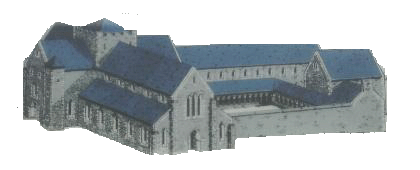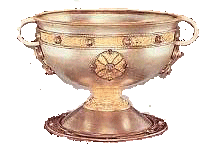| |
| |
| The
Irish monks believed that the greatest sacrifice they could make was to
go into exile "for the love of Christ." St. Columba of Derry
was one of the first In time, a decline in the religious fervor of the monks set in. Some monasteries passed into the control of lay people, and many kinds of abuses resulted. In the 700's, a reform movement began, led by men called Celi De (servants of God), who preached a return to the former strictness of monastic life. But, before they could achieve much, bands of warriors from Scandinavia, called Vikings, began to raid the country. Long before the coming of the Vikings Irish kings and chieftains had become notorious for their depredations of ecclesiastical properties. The greatest of the Irish raiders was Feidlimid mac Crimthainn, king of Munster, who is reputed to have burned the monasteries of Kildare, Clonfert, Durrow, and Clonmacnoise among others. Feidlimid was himself in holy orders, probably of Episcopal rank As such sympathies lay with the Celi De, and justified his raids as a crusade to stamp out corruption in the church. Although his victims were probably chosen because of their affiliation with the Ui Neill kings of the north. The arts owed much to the monasteries. Some of
the finest metalwork Go to the history of Ireland. |
||
|
|
|
|
 missionaries to leave Ireland, although it could be said there were
missionaries to leave Ireland, although it could be said there were  of
this period was specially made for them. Examples of such metalwork are
the
of
this period was specially made for them. Examples of such metalwork are
the